EVERYONE knows Ryan Cayabyab as one of the pillars and icons of original Filipino music.
What other people know is that the composer and conductor, also known as Mr. C, is also a visual artist.
It was when the pandemic shut down the live music scene, which struck Cayabyab as a bit of a blessing in disguise, that the maestro decided to focus on painting – a focus that landed him his first art exhibit, “Tunay na Ligaya”, which will be held on Oct. 21 to Nov. 5 at the Power Plant Mall in Makati City. Curated by artist Nell Belgado, the exhibition will showcase Mr. C’s amusing works – a reflection of his personality.
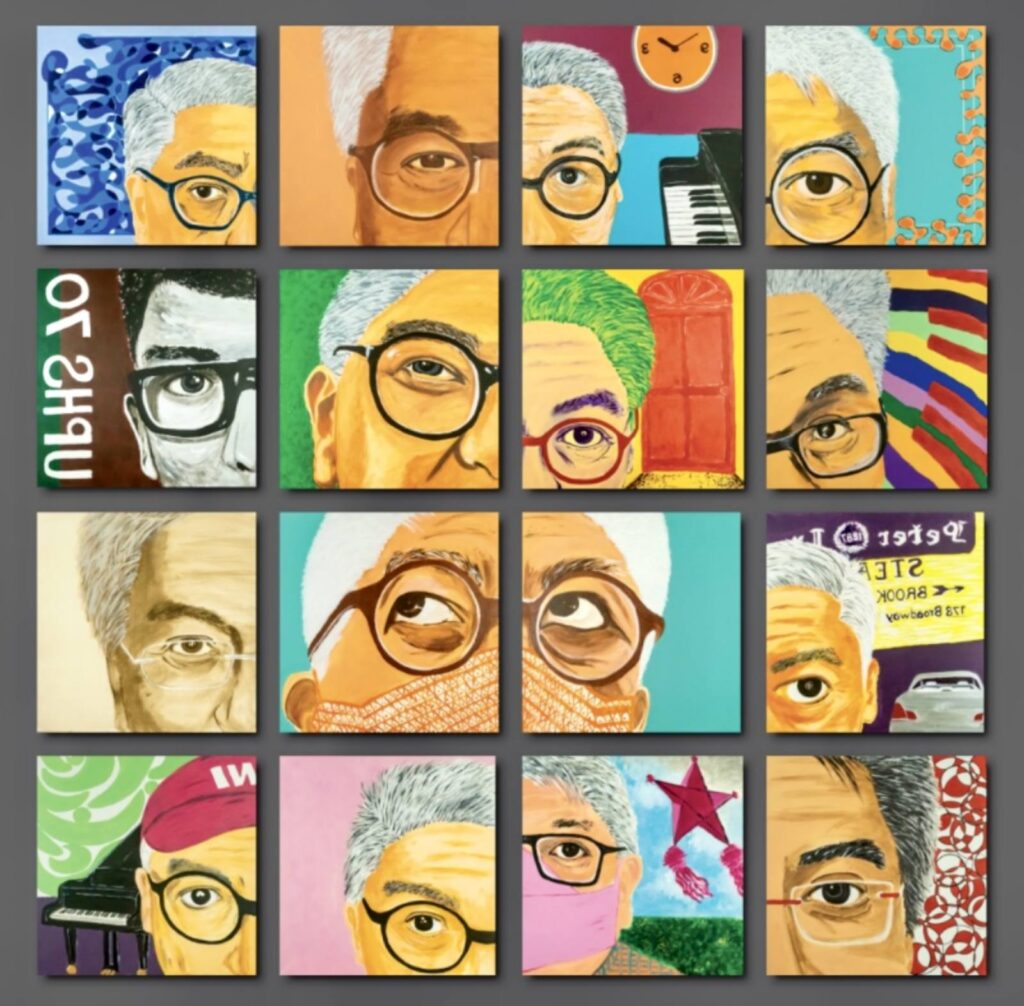
The exhibit poster shows a series of 16 “eyefies” or striking self-portraits of Cayabyab, with just parts of his face on canvas, inspired by “One”, his 1981 a cappella album of 16 voices.
His other works include the Red series, which has fascinating streaks of red tinted with yellow, orange and violet. The Estilo series, meanwhile, is an homage to De Stijl, the 20th century Dutch art movement, with squares and rectangles in various sizes painted in vibrant hues.
Explorations in Modern Art go into different geometrical patterns, squiggles and free-flowing shapes. Pastels and flowers make up Dreams and Hardin series, bursts of colors that exude sheer joy and hope, as do many of his musical compositions.
“There’s no profound reason why I want to put up an exhibit. I just want to show a collection of art pieces that reflect my current state of expression – after rediscovering color and texture in the visual arts,” he said in an interview with BusinessMirror.
Cayabyab applies the same methods of random composition to his drawings as he uses for his music.
“The more unplanned and spontaneous the creation, the more satisfied I am with the final product. And it is the same when I start to work on a song – I don’t stop until I have completed the entire song in one sitting – with mental notes to revisit the work after a day or two to make minor adjustments. The important thing is the structure and the general feel have been laid down. With bigger works that may take more days or weeks, I work like a machine that knows where to continue exactly where I left off,” he explained.
For Cayabyab, music and visual arts are both sources of inspiration, reflection and joy.
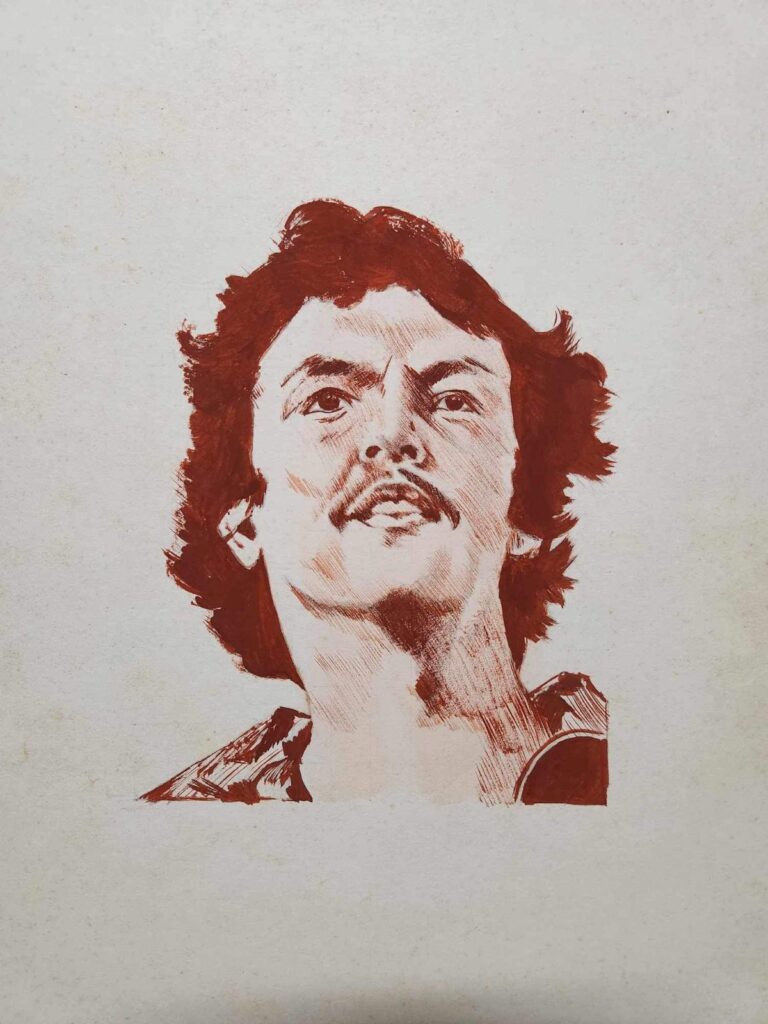
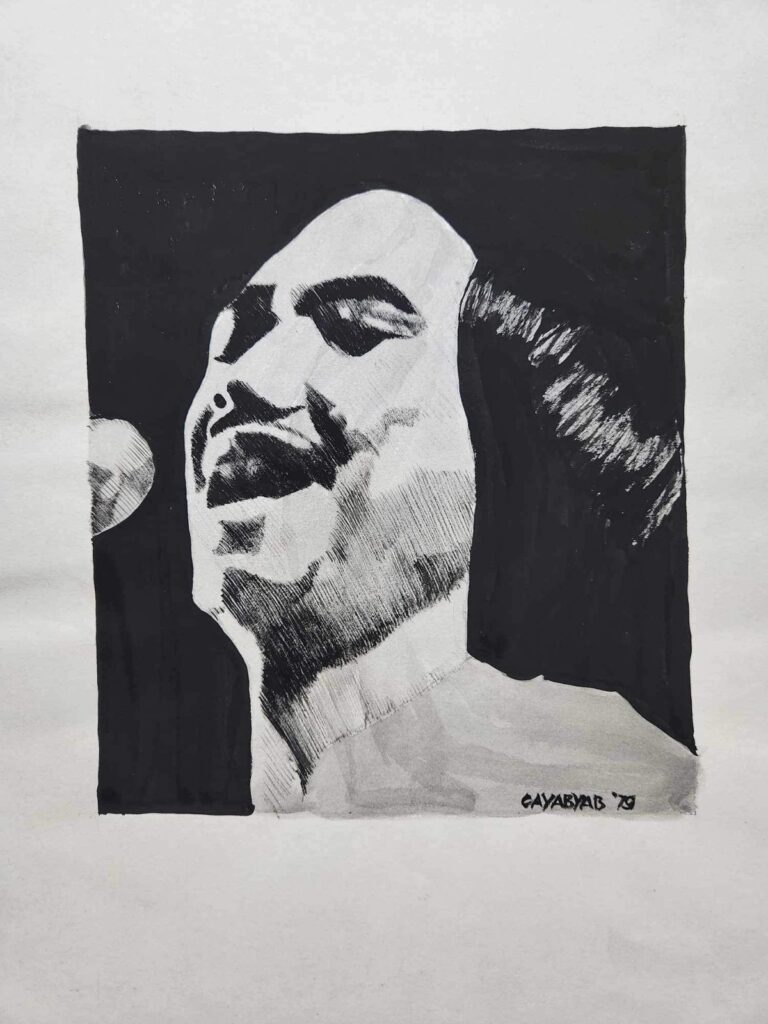
“Music creation is just a little noisier. Literally. I don’t listen to music when I paint. Although my mind is a bit ‘noisy’ when I paint, at this point in my life, I like the solitude that painting gives me. I like the peace and quiet. So there. I am really getting old. Another difference: I paint for myself. I write music for others, but never for myself. For sure it will eventually come to a head. I might end up painting for others. I don’t know really. But for now, I enjoy painting for no particular reason except that it gives me a lot of quiet time.”
Mixed media and tools
Tinkering with paints and brushes is how Cayabyab started anew his journey into painting. In the late 70s and early 80s, he got curious about the various lead tips of pencils, categorized as H or B, and pencils in varying degrees of thickness, hardness and blackness.
“I enjoyed drawing the faces of people I worked with. It was hit-and-miss. Sometimes the faces looked okay, sometimes not,” he told Esquire Philippines.
He also utilized watercolor to paint faces but was not successful.
“The best one I did, I think, was Jim Paredes. Watercolor is very difficult. It was harder to control brush strokes versus pencil strokes.”
In the late 80s, he experimented with pen and ink. “I began drawing less and less realistic objects. During the pandemic, I got curious about acrylic painting, since I had no previous experience with it, and wanted to try it out. I bought a cheap black tube of acrylic, which I enjoyed using. I moved on to primary colors and experimented with them on paper I bought at an art shop.”
Cayabyab’s sister-in-law gave him three unused canvases and several tubes of used acrylic paint. He noticed the difference between the cheaper acrylic tubes and the Winsor & Newton paints. Later, he used the Grumbacher paint brand. Visual artist Toym Imao advised him to use other paint brands, including the more expensive ones, such as Amsterdam and Golden. Over time, Cayabyab learned how different brushes work, sometimes from store clerks’ recommendations.
“During the pandemic when I had all the time in the world, I painted in the evenings after dinner and our family rosary. I couldn’t get enough of it and wouldn’t stop until I finished what I started. I usually worked five to six hours till I could no longer control my brush. In the mornings, I worked an hour till lunch summoned. In the afternoons, I worked about three hours, till I got so sleepy, my paints began to run all over the place, and I ended up cursing. That’s when I stopped and drank a glass of cold water, or went out for fresh air. Or I just took a power nap.”
Hooked on acrylic
The shift to online activity during the global outbreak of coronavirus set a new stage for Cayabyab’s art practice. He was drawn back to the canvas in 2022 on an artistic investigation that soon found its way to a very active Facebook following.
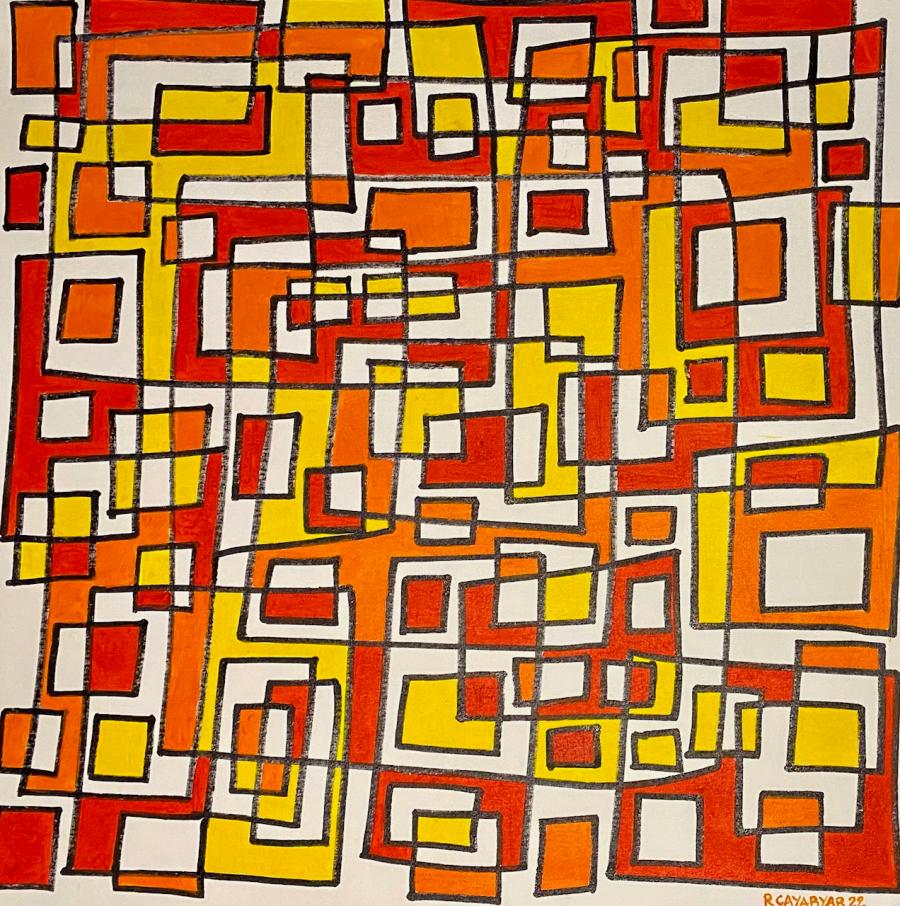
(Credit: Ryan Cayabyab)
He posted a small acrylic painting of dots and dashes on social media, and – as with his famous doodles at the 2010 music camp he headed – friends were quick to ask him for it. The episode happened in several cycles as he became more fascinated with acrylic, and his little paintings quickly grew a following among friends.
Soon, Cayabyab was buying acrylic paints in more colors; people started sending him painting materials; more family and friends asked for his art pieces; and eventually, to his surprise and bemusement, people began to offer to pay for them. He confesses he was not under any illusion of innate artistic brilliance: “Hindi naman ako painter, musician ako.”
But besides the excitement of discovery and exploration, he could not deny the practicality of having an alternative means of income. More importantly for Cayabyab, the joy he had found in his return to painting in turn had found a means of being shared with others through his growing following. And the opportunity for him to tell different stories, in ways new to himself and to his audiences, had presented itself.
Landbank mural
For its 60th anniversary, Land Bank of the Philippines commissioned Cayabyab last year to write a song as part of its 2023 celebrations. The management also invited him to speak about his life journey as a musician. He included painting because of the subject of reinvention, picking up new knowledge and developing new skills.
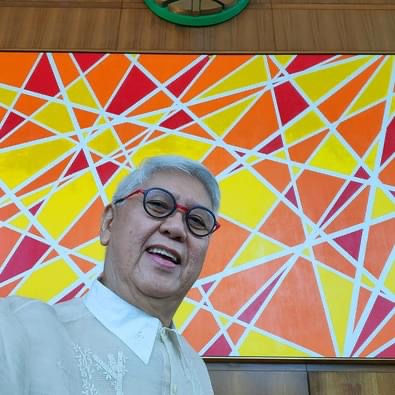
Landbank then commissioned the production of “Directions” for its lobby to herald their own new era. “I guess it struck a familiar chord as
Landbank had transformed into a universal bank. When they called me for a meeting to discuss the song content, they asked if I was interested to create a mural to hang in their lobby. What? Me? Paint a mural? How big? 10.6 feet by 17.6 feet! What will I paint? Well, such is the story of my life, and I said sure, why not, even if deep inside I wasn’t that sure, but I was extremely excited. So now, I have a mural hanging in the lobby of the head office of Land Bank of the Philippines. Who would have known? I am still scratching my head until now.”
Cayabyab’s family reaction
“My family is as amazed as I am with the number of paintings I have churned out. Our house has become more cluttered and filled with canvases. But now, with the 53 pieces extracted for the exhibit, the landscape has become a bit more peaceful.”
How he got into painting
Music and painting were constantly in Cayabyab’s life since childhood, from the time their family lived in the University of the Philippines Diliman campus with 10 lady boarders enrolled in the College of Music, to when they transferred to another home that they then shared with aunts and cousins enrolled in the College of Fine Arts.
“I just sat and watched them draw and paint. Some of them left unfinished canvases and leftover tubes of oil paints,” he said.
In 1968, he joined the Young Men’s Christian Association national art competition at 14 years old using two tubes of violet and green paint and white primer substance and an old canvas his relatives had left behind when they moved away. He turned in the piece that he had titled “Mankind is One” and learned by telegram a week later that he had placed third. He won P50 – a considerable sum then. Cayabyab bought two cans of corned beef (P1.20 each) and two cans of Vienna sausage (50 cents each), Guitar watercolor set and box of oil pastels before giving the rest of his prize money, P20, to his father.
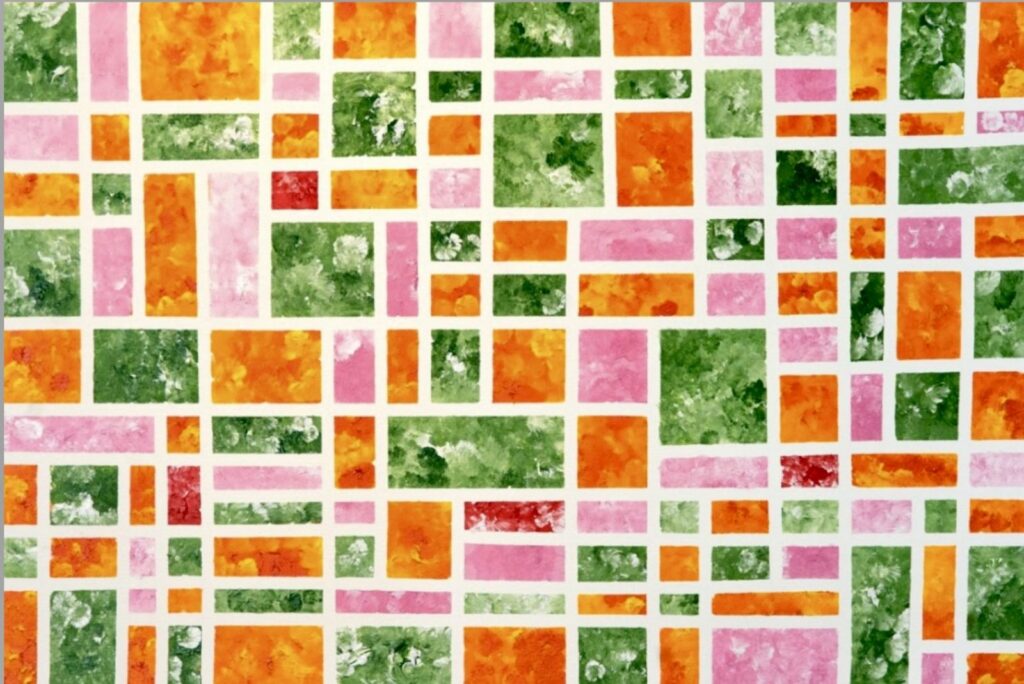
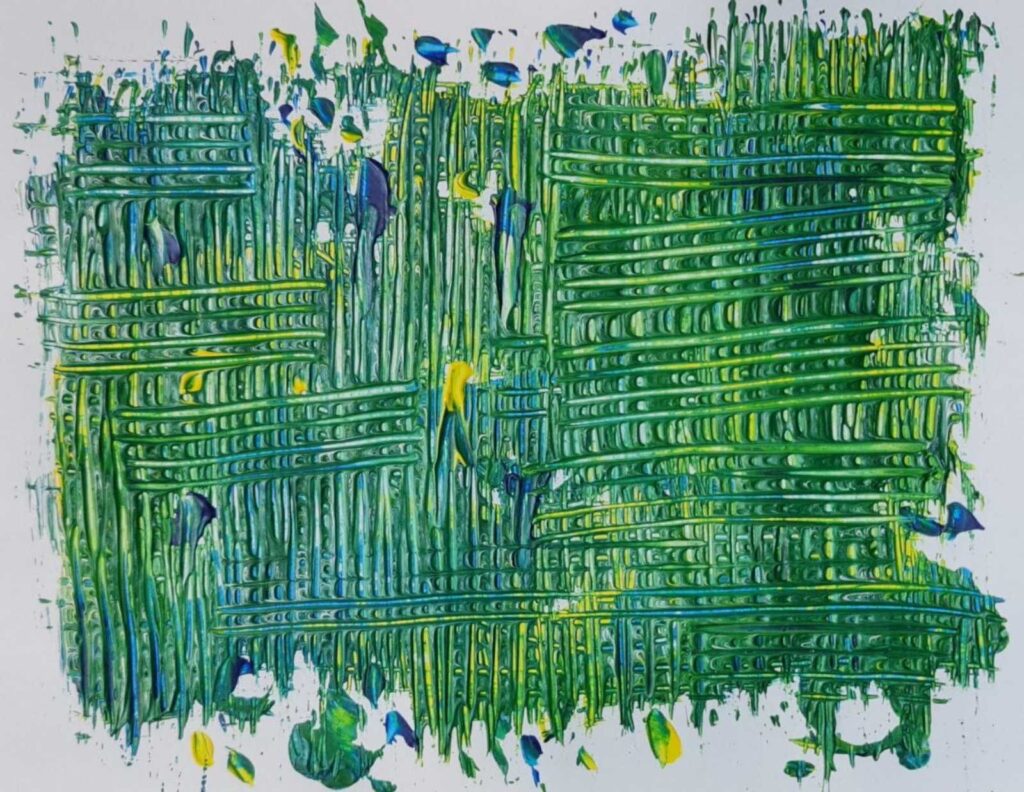
Despite such achievement, he didn’t think of painting as a career, so he enrolled initially in business administration. Then because of a scholarship, he shifted to music at the UP College of Music, where his mother, Celerina Venson Pujante (an opera singer), worked as faculty member.
He thrived in music, with many of his compositions becoming great Filipino standards. All his hard work paid off. He was named National Artist for Music in 2018, then a year after was the lone Filipino recipient of the Ramon Magsaysay Awards.
While he continues to put heart and soul into his music, Cayabyab is happy to rediscover his love for the visual arts. “You should dig deep into your inner selves and see what your other passions and interests are. There are still so many things that we can do. There is no age limit to what you can do.”





